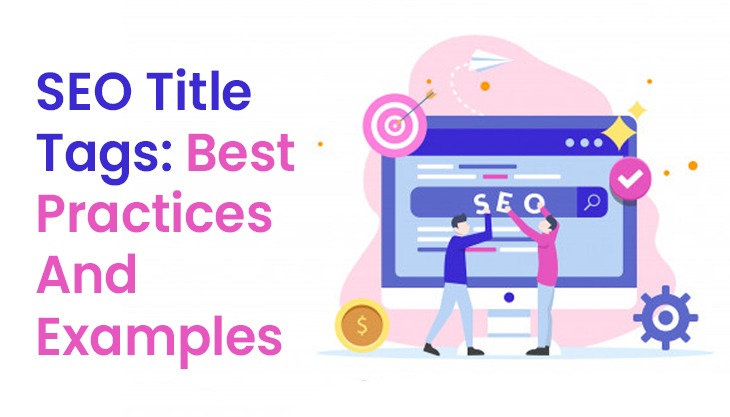The title tags in the SEO are just like the title of your book for the demographics of your two most important types of readers i.e., people and robots. Now have a look at some title tags to make sure that they are optimized for the readers alike:
WHAT ARE TITLE TAGS?
The title tags are the HTML element which are found in the head section of that code of your web page. These titles can appear in the form of:
- Search engine results
- Social media posts
- Browser tabs
WHY THE TITLE TAGS ARE IMPORTANT?
The title tags are important because they let the readers know about the information which will be present when the users click on the page. Usually they are important for the search engines and they also function to determine the relevancy of the page as a result in a search query. If the Google does not like title tag then it may change it to better user needs but if it happens then you can bet it most likely won’t be to your liking. The title tags are the major factor in helping the search engines understand what your page is about and then they are the first impression many people have of your page and these tags are almost used in three key places i.e., search engine results pages, web browsers and social networks.
1) Search engine result pages: The title tag determines your display title in the SERPs and the search visitor’s first experience of your site and even if the site ranks well then a good title can be the make or break factor in determining whether or not someone clicks on your link.
2) Web browsers: The title tag which is also displayed at the top of web browser acts as a placeholder and especially for those people who have many browser tabs open. The unique titles with the important keywords can help ensure that people do not lose track of the content.
3) Social networks: There are some external websites especially social networks that will use the title tag to determine what to display when you share that page. This will allow you to optimize for each network and it also provides longer titles where they might be beneficial.
ELEMENTS OF A TITLE TAG AND BEST PRACTICES:
There are many practices and guidelines which are given below:
1) Length: The length of title tags should be 50 to 60 characters. Basically the Google has specifically came out and also said that the title tags should be of this length but if the title is longer than 60 characters then the risk of it becoming cut off in the middle rises.
2) Keywords: The most important thing in the web page is keywords more than the length you use. You should put the desired keywords which you want to rank for in the title but do not overdo it. The Google can also easily recognize the keyword stuffing and may also change the title of your web page.
2) Avoiding stop words in your title tags: The stop word can be any of the following:
- But
- So
- On
- Was
- With
Sometimes it is not possible to have a title tag without the stop words but if you try different combinations of the same title then you can find them.
4) Use unique titles: There are some of the web pages on the site which are different so that you should distinguish their differentiations with the titles and as we know the Google says do not use generic titles like home or profile to name your pages. But if you do so then the Google may change the name to something more in line with what the web page contains.
5) Use action words in your title: If you are making the title then you should use the action words or the action verbs which express an action because having the action words in title tags can help users to click through. There are some examples of action words which are given below:
- Get
- Take
- Learn
- Make
- Go
HOW TO WRITE A TITLE TAG?
1) Conduct keyword research: As we know the title tags are important to the search engines so you should complete your keyword research before crafting one. When you complete the keyword research then you should have a clear understanding of the content which describes the content and entices the searchers to choose your result.
2) Don’t write a title that is too long: There are title tags which get truncated in search results around 550 to 600 pixel width and it is almost around 65 to 75 characters. So it has been suggested to keep the title tag within the character limit.
3) Keyword placement: As you do not have the large amount of the space for the title, it is important to get higher priority keywords closer to the beginning.
4) Make sure every page has a unique title: You should create a unique content with the unique titles which you can help search engines avoid confusing and showing the wrong page.
CONCLUSION:
From the above article, we can conclude that the title tags seem like the facet of beginner’s SEO, however I would argue that title tags play an important role and the way you use them can impact your SEO significantly. You should use all the SEO tools at the disposal wisely and make sure that you are getting the most out of each SEO facet no matter how small it seems.

















Post Comments